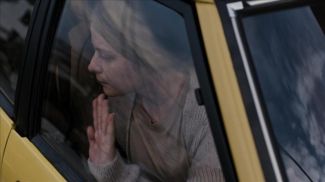BEIJING, 11 May (BelTA - China Daily). - Rural vistas and people's resilience key themes in impressive body of work.
Painter Shen Shihui, who was born in Tianjin, didn't visit his father's hometown in Tianping village, Xiuwu county, Henan province, until he was a middle school student in the 1970s. He was immediately impressed by the landscape, as the village was on the mountainside, and at the foot of the mountain, there was a running brook.
The village, located in the southern part of the Taihang Mountains amid steep peaks, trickling streams and luxuriant vegetation, boasts an excellent natural environment and cultural accumulation. Many painters and poets lived there in ancient times.
In the following several decades, he paid frequent visits to the village and surrounding places. They become a storehouse of inspirations, which have tremendously nurtured his creation as a painter.
Shen, 63, a professor at the Tianjin Academy of Fine Arts, held an exhibition of his works at the National Art Museum of China in April. More than 120 traditional landscape paintings of his were on exhibit, showing the skills he has mastered over the years.
Among the paintings displayed were images related to his hometown, including one depicting spring in a village not far from it. Many villagers who lived in the mountains migrated to other places to work in the past. But in recent years, many of them have come back home to run homestays.
In one of the paintings, called Spring in a Mountain Village, Shen depicted changes in the lives of locals, including their newly renovated homestays, and the cars they can now afford. He also painted weeping forsythia, which blooms in early spring, and the crops on the mountains which are turning green, showing the vitality of the season.
"It shows the progress we have achieved in rural revitalization. The environment is getting better, and people live a better life without having to leave home," says Shen.
Another highlight of the exhibition was a painting Shen created in 2009 called Resuscitation, just a year after the 2008 Wenchuan earthquake in Sichuan province, after he paid a visit to Yingxiu town, the epicenter of the earthquake. He saw the destruction, and the temporary sheds where people who lost their houses lived.
"Even under such circumstances, people had to restore their hometown and resume production. Their toughness touched me. And I also saw efforts to help offered by other places, which made me realize the influence of solidarity and helping each other," says Shen.
He used a line-drawing technique in order not to make the scene depressive, and depicted many details he witnessed there, like a giant stone with the words Yingxiu on it. It had rolled down from a mountain that collapsed during the earthquake, and has been kept there and become a symbolic guidepost.
The disastrous earthquake offered the painter a different chance to observe the collapsed landscape. "Collapsed landform is a kind of landscape that painters try to depict in their works. But most painters would see such a landform with their own eyes after the mountains had been flattened for many years. The earthquake, however, offered a chance for me to see it not long after it happened," says Shen.
But his paintings are not necessarily true-life depictions." When you see a landscape painting, you can immediately know what the place is, but if you go to the place, you cannot find exactly the same landscape. That is the requirement for traditional Chinese landscape paintings. So what you see on the painting is the secondary nature that comes from the heart of the painter.
"It requires the painter to be very familiar with the place. After repeated observation, thinking and sketching, you can store it in your heart, and when you draw, it naturally flows from your brush," says Shen.
He also mentions that when he paints, his emotions play a major part. "Inspired by nature, you'll have a burning desire to draw. You must be passionate about that. If you are not excited, your paintings will not touch the viewers either," he says.
During a visit near his hometown, he was attracted by the patterns on the stones in the mountains. It inspired him to scatter the hairs of his brush for drawing, which can create similar patterns on the paper. The skill is called sanfeng in Chinese. Combining another skill pomo, which means splashing ink on the paper, Shen developed the sanfeng pomo technique as a main part of his methods of teaching how to draw landscape paintings.
He also developed some other detailed skills for drawing landscape paintings, including wet painting method. It refers to splashing ink on a piece of paper, making it wet, and then using a dry brush to draw. It can give full play to the ink, and form misted and illusory effects.
According to Wu Weishan, director of the National Art Museum of China, "Shen's landscape paintings show a distinctive vastness of the mountains and clouds. It comes from his observation of the nature, and his intensive study on traditional Chinese paintings. His works give the viewers an artistic feast."
One of the works at the exhibition, which shows Langya Mountain in Baoding, Hebei province, will be kept in the permanent collection of the National Art Museum of China.











